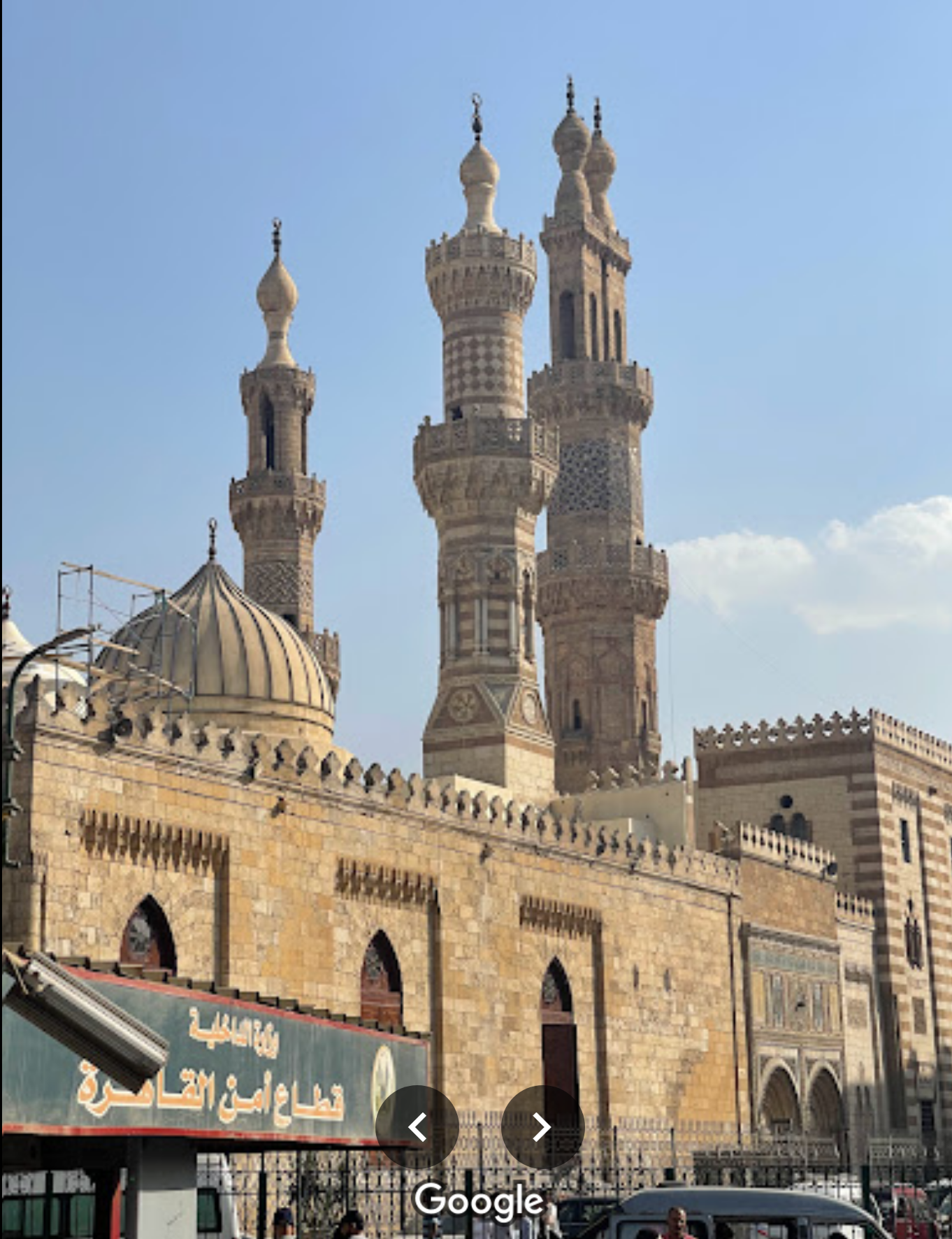Archives: Bios
Bio: Abu Darda

Abu Darda
أبو الدرداء الأنصاري الخزرجي
d. 32 H. (653 CE) in Damascus (sahabi)
radiya Allah anhu
Bio: Abu Shamah al-Maqdisi

Abu Shamah Shihab al-Din al-Maqdisi
b. 599 – d. 665 in Damascus (1202-1267 CE)
الإمام عبد الرحمان بن إسماعيل بن إبراهيم عثمان المقدسي ثم الدمشقي، المعروف بأبي شامة
radiya Allah anhu
Bio: Abu Sulayman al-Darani

Abu Sulayman al-Darani
أبو سليمان عبد الرحمن بن عطية الداراني
(d. 215 H. in Dara near Damascus)
radiya Allah anhu
Bio: Abul Dahdâh al-Salihi

Abul al-Dahdâh al-Salihi
أبو الدحداح، أحمد بن محمد بن إسماعيل التيمي الدمشقي الصالحي
d. 328 in Damascus
radiya Allah anhu
Bio: Bilal ibn Ribâh al-Habashî

Bilal ibn Ribâh al-Habashî al-Qurashî al-Taymî
بلال بن رباح الحبشي القرشي التيمي
d. 20 or 18 or 19 H. in Damascus
radiya Allah anhu
Bio: Dihya al-Kalbi

Bio: Ibn `Asakir al-Dimashqi al-Shafi`i al-Ash`ari

Ibn `Asakir al-Dimashqi al-Shafi`i al-Ash`ari
b. 499 – d. 571 in Damascus
radiya Allah anhu
Bio: Mu’awiya b. Abi Sufiyan | معاوية بن أبي سفيان

Mu'awiya b. Abi Sufiyan
معاوية بن أبي سفيانb. 15 H. in Makka – d.60 H. in Damascus
sahabi - radya Allah anhu
Bio: Nur al-Din b. Zanki

Nur al-Din b. Zanki
b. 511 – d. 579 in Daamascus
radiya Allah anhu
– السلطان أبو القاسم نور الدين محمود ين أبي سعيد(أبو سعد) زنكي بن سيف الدين –
Just ruler of Damscus, first in history ot build a Dar al-hadith, gave many books as waqf, built schools and mosques and institueted many awqaf, loved and honored the pple of din; strong in warfare, a good archer, he would only consume out of wealth he that the `ulema deemd lawful (more…)
Bio: Sh Muhammad al-Hashimi

Shaykh Muhammad al-Hashimi al Hasani al-Shadhili
b. 1298 – d. 1381 H. (1880–1961 CE) in Damascus (CE)
Bio: Sh. Ahmad b. Badr al-Din al-Hanafi

Shaykh Ahmad b. Badr al-Din al-Hanafi
d. 934
أحمد بن بدر الدين الحنفي
radiya Allah anhu
Buried in the Hamriyyah graveyard
– بمحلة الشويكة – [ZaSh p. 41]
Reference: Damas Cultural Society © 2007
Bio: Sh. Ahmad Habbal

Shaykh Ahmad al-Rifa´i al-Habbal al-Dimashqi
الشيخ أحمد الرفاعي الحبال
d. 1430 H. (2009 CE) in Damascus
Bio: Sh. Badr al-Din al-Hasani

Shaykh Badr al-Din al-Hasani
محدث الشام الأكبرالشيخ محمد بدر الدين بن يوسف الحسني المغربي الاصل الدمشقي
b. 1267 – d. 1354 H in Damascus (1850-1935 CE)
qaddasa Allah sirrahu
Bio: Sh. Ibrahim al-Yaqoubi

Sayyidi Shaykh Ibrahim al-Yaqoubi al-Hasani al-Idrisi
الشيخ السيد إبراهيم اليعقوبي الحسني
d. 1406 H. / 1985 CE in Damascus
qaddasa Allah sirrahu
Bio: Sh. Ismail al-Yaqoubi

Sayyidi Shaykh Ismail al-Yaqoubi al-Hasani al-Idrisi
الشيخ السيد إسماعيل اليعقوبي الحسني
d. 1380 H. / 1960 CE in Damascus
qaddasa Allah sirrahu
Bio: Sh. Muhammad Abul Yusr `Abidin al-Husayni

Al-Sayyid al-Sheikh Muhammad Abul Yusr `Abidin al-Husayni
الشريف الشيخ محمد أبو اليسر بن محمد عابدين الحسيني
b. 1307 – d. 1401 H. in Damascus (1889–1981 CE)
radiya Allah anhu
Bio: Sh. Muhammad al-Mubarak al-Hasani

Sayyidi Sh. Muhammad al-Mubarak al-Hasani al-Idrisi
الشيخ السيد محمد المبارك الحسني
d. 1330 H. in Damascus
qaddasa Allah sirrahu
Bio: Sh. Muhammad al-Tayyib | الشيخ محمد الطيب

Sayyidi Sh. Muhammad al-Tayyib al-Hasani al-Idrisi
الشيخ السيد محمد الطيب الحسني
b. 1255 H. in Algeria – d. 1313 H. in Damascus
qaddasa Allah sirrahu
Bio: Sh. Muhammad al-Yaqoubi

His Eminence Shaykh Muhammad al-Yaqoubi al-Hasani al-Idrisi
العلامة الشيخ السيد محمد أبو الهدى اليعقوبي الحسني الإدريسي
Hafizhahu Allah – May Allah preserve him
Bio: Sh. Muhammad Amin `Abidin (Ibn `Abidin)

Al-Sayyid al-Sheikh Muhammad Amin`Abidin al-Hanafi al-Husayni
سيدي الشيخ محمد أمين بن عمر بن عبد العزيز عابدين الحنفي الحسيني الدمشقي
b. – d. 1252 H. in Damascus
radiya Allah anhu
Bio: Sh. Muhammad ibn Yallis

Shaykh Muhammad ibn Yallis al-Tlimsani al-Shadhili
b. 1264 – d. 1346/7 H. in Damascus (1847–1927)
Bio: Sh. Rislan al-Dimashqi

Sayyidi Sheikh Rislan al-Dimashqi
d. ~540 H. in Damascus
radiya Allah anhu
Bio: Sh. Sharif al-Yaqoubi

Sayyid Shaykh Sharif al-Yaqoubi al-Hasani al-Idrisi
الشيخ السيد شريف اليعقوبي الحسني
b. 1282 – d. 1362 H. (1865–1943 CE) in Damascus
qaddasa Allah sirrahu
Bio: Sh. `Abd al-Qadir al-Jaza’iri

Al-Amir Sheikh `Abd al-Qadir al-Jaza’iri al-Hasani al-Idrisi
b. 1222 H. in Algeria – d. 1300 H. in Damascus
radiya Allah anhu
Bio: Sh. `Ala al-Din bin Muhammad`Abidin

Sheikh `Ala al-Din bin Muhammad `Abidin al-Hanafi al-Husayni
الشيخ علاء الدين بن محمد بن عابدين الحنفي الحسيني الدمشقي
b. 1244 – d. 1306 H. in Damascus
radiya Allah anhu
Bio: `Abd al-Malik b. Marwan

`Abd al-Malik b. Marwan
b. 25 H. in Madinah – d. 86/7 H. in Damascus
أبو الوليد عبد الملك بن مروان
radiya Allah anhu
Bio: `Abd Allah b. Ja`far al-Sadiq

`Abd Allah b. Ja`far al-Sadiq (“al-Aftah”)
d. 149 H. in Damascus
radiya Allah anhu
Damascus | Darwishiyya Mosque Sandal Poetry

Damascus: Umawi Mosque

Burial place of the head of Prophet Yahya - `aleihi salam
Burial place of the head of Sayyiduna Husayn ibn Abi Talib radiya Allah `anhu
(more…)
Studying in Damascus

Studying in Damascus
Info on Islamic Centers in Syria
by Abu Yahya (2003)
In the name of God, the Most Gracious, the Most Meciful
All praises be to Allah, Lord of Creation, and peace and blessings be upon our liegelord Muhammad, his companions and folk, one and all.
As-Salaamu Alaykum wa Rahmatullah
You asked about the different universities, colleges, and institutions in Damascus for learning Arabic and Islam. (more…)
Test Place: Umawi Mosque, Damascus (test page)

Resting place of the noble head of Sayyiduna al-Husayn ibn Abi Talib
(more…)
Result of filter: 1